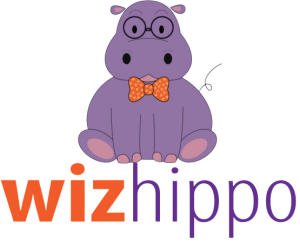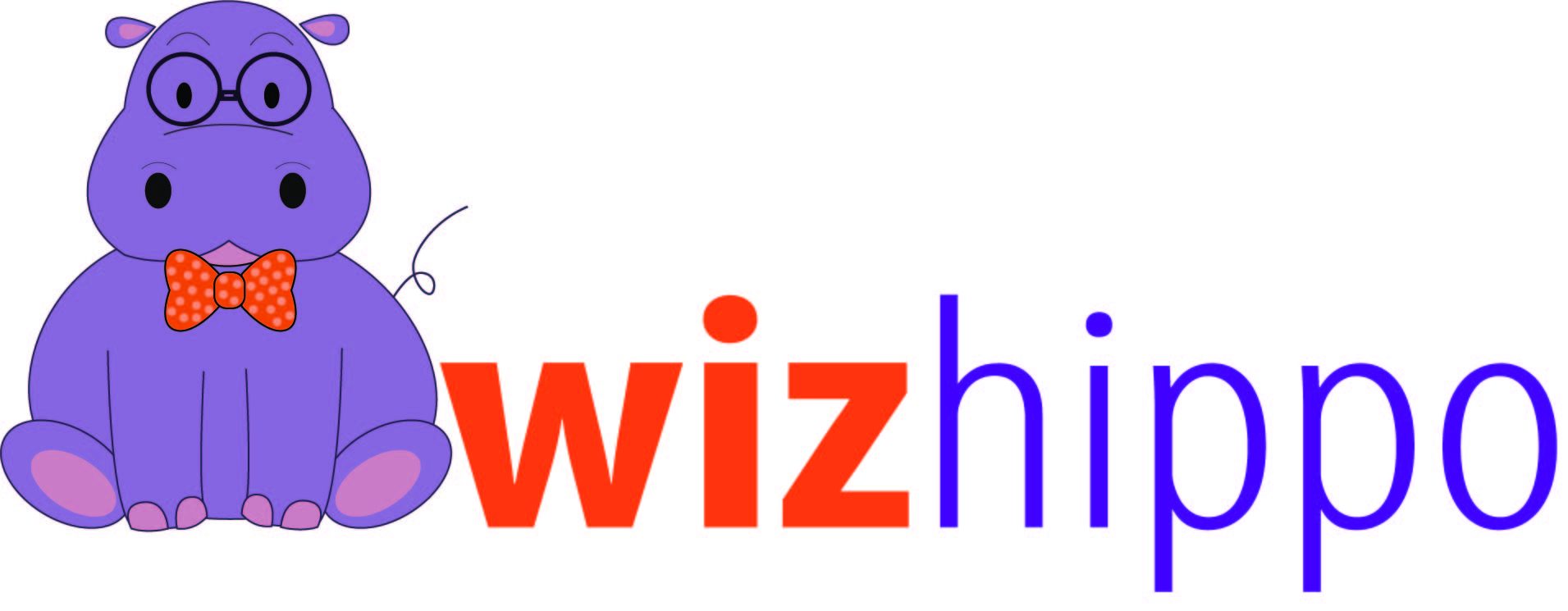
In today’s increasingly digital world, traditional paper portfolios are being replaced by digital alternatives that offer greater flexibility, accessibility, and insights. For preschools and early childhood educators, digital portfolios provide a powerful tool to document and track developmental milestones, showcase a child’s growth, and communicate progress with parents in real-time.
A digital portfolio is essentially a collection of a child’s work, achievements, and developmental records compiled over time in a digital format. It allows teachers and parents to track the child’s progress in areas like cognitive development, social skills, and creativity. In this blog, we’ll discuss the benefits of creating digital portfolios for preschoolers and provide a step-by-step guide on how to set one up using a daycare management system like WizHippo.
Why Digital Portfolios Matter in Early Education
The early years of a child’s education are filled with rapid developmental changes and milestones. A digital portfolio captures these moments, providing a comprehensive record of each child’s unique learning journey. Here are some key reasons why digital portfolios are valuable in preschool settings:
- Track Developmental Milestones: Digital portfolios offer an organized way to track cognitive, emotional, social, and physical milestones over time. By documenting these milestones, teachers can assess each child’s development and adjust their teaching strategies accordingly.
- Enhance Parent Engagement: A digital portfolio allows parents to stay involved in their child’s education. Parents can access real-time updates, photos, and progress reports, creating stronger connections between home and school.
- Encourage Reflection and Growth: By reviewing a child’s portfolio, teachers and parents can reflect on progress, celebrate achievements, and identify areas for further development. This ongoing documentation provides insights that can guide personalized learning.
- Foster Digital Literacy: Introducing preschoolers to the concept of digital portfolios can also help them develop basic digital literacy skills, preparing them for future learning environments that increasingly rely on technology.
Key Benefits of Digital Portfolios
1. Real-Time Documentation and Access
Digital portfolios allow for real-time updates. Teachers can capture and upload documentation immediately, providing parents with instant access to their child’s progress. Whether it’s a photo of a completed art project, a video of a child practicing fine motor skills, or an anecdotal note about social interactions, digital portfolios offer timely insights into each child’s development.
- Photos and Videos: Capture moments that demonstrate learning in action. For example, a video of a child building a tower with blocks can show problem-solving skills, hand-eye coordination, and perseverance.
- Daily Anecdotes: Teachers can write short notes about a child’s day, such as their participation in group activities, emotional regulation during transitions, or any new skills they demonstrated.
WizHippo’s documentation features allow teachers to upload and organize media and notes, providing parents with immediate access to their child’s digital portfolio.
2. Comprehensive Developmental Tracking
A digital portfolio offers a holistic view of a child’s development across multiple domains. Teachers can document cognitive achievements (like early literacy skills), social interactions (such as playing cooperatively with peers), and emotional growth (like learning to self-regulate emotions).
- Milestone Tracking: Keep a record of key developmental milestones, such as a child’s first time writing their name, mastering a new skill, or showing empathy toward a classmate.
- Progress Over Time: Digital portfolios allow educators and parents to track progress over the course of months or years. This longitudinal view helps identify patterns in learning and growth, making it easier to provide targeted support when needed.
WizHippo’s milestone tracking tools allow teachers to document each child’s achievements, categorize them by developmental domain, and track progress over time.
3. Improved Parent-Teacher Communication
Digital portfolios bridge the gap between teachers and parents, ensuring that both parties are informed and aligned on a child’s progress. This open communication fosters collaboration, making it easier to address challenges early and celebrate successes together.
- Parent Access: Through a digital portfolio, parents can log in to view updates at any time, providing them with a deeper understanding of their child’s daily activities and learning experiences.
- Customizable Reports: Teachers can generate progress reports directly from the portfolio, summarizing key achievements and areas for improvement. These reports can be shared with parents during conferences or at the end of each term.
WizHippo offers customizable parent communication features, allowing educators to generate and share detailed progress reports, notes, and visual documentation through the parent portal.
4. Organization and Efficiency
Digital portfolios eliminate the need for cumbersome physical files and binders. With everything organized digitally, teachers can easily access and update a child’s portfolio from any device. This organization not only saves time but also ensures that no important documentation is lost or overlooked.
- Easy Access to Records: All of a child’s records, photos, and progress reports are stored in one place, making it easy to find specific information when needed. Teachers can quickly access a child’s portfolio during parent-teacher meetings or while preparing assessments.
WizHippo’s centralized documentation system ensures that all files are neatly organized, searchable, and available to educators at the click of a button.
How to Create a Digital Portfolio for Preschoolers
Now that we’ve covered the benefits of digital portfolios, let’s walk through the steps to create one for each preschooler in your care. Here’s how to get started using WizHippo or a similar daycare management system:
Step 1: Set Up Individual Profiles
The first step in creating a digital portfolio is to set up a profile for each child in your class. In WizHippo, this process is simple and intuitive.
- Create a Child Profile: Enter the child’s basic information, such as their name, birthdate, and any relevant notes about their developmental needs or goals. This profile will serve as the home for all future documentation and updates.
- Personalize the Portfolio: Add a photo of the child and create custom folders to organize their portfolio by category (e.g., “Art Projects,” “Social Skills,” “Cognitive Milestones”).
Step 2: Document Developmental Milestones
Next, start documenting each child’s progress. For preschoolers, key developmental milestones might include fine motor skills, language development, social interactions, and emotional regulation.
- Record Observations: Take daily or weekly notes about each child’s activities and accomplishments. For example, you might note that a child has mastered using scissors, successfully identified letters in the alphabet, or shared toys with a classmate.
- Upload Photos and Videos: Whenever possible, include visual documentation of the child’s achievements. For example, upload photos of their artwork or videos of them engaging in role-play activities.
WizHippo’s platform allows educators to categorize and timestamp each milestone, providing a clear timeline of the child’s development.
Step 3: Generate Progress Reports
As you document milestones, you can also generate progress reports to summarize the child’s growth and achievements over a specific period. These reports can be shared with parents during parent-teacher conferences or at the end of a school term.
- Highlight Key Achievements: Include examples of the child’s most significant achievements, such as learning to count, participating in group activities, or developing early writing skills.
- Set Future Goals: Use the progress report as an opportunity to set goals for the next term. For example, you might suggest focusing on social skills, language development, or creative expression.
WizHippo’s report generation feature allows you to customize progress reports based on the child’s portfolio, ensuring that parents receive a clear and comprehensive summary of their child’s development.
Step 4: Share the Portfolio with Parents
One of the major advantages of a digital portfolio is that parents can access it in real-time, providing them with ongoing updates about their child’s learning. Encourage parents to review the portfolio regularly and use it as a conversation starter with their child.
- Parent Portal Access: Provide parents with login credentials to the digital portfolio platform. This allows them to view their child’s progress at any time, see new updates, and leave comments or questions for teachers.
- Ongoing Communication: Encourage parents to use the portfolio as a tool for collaboration. If they have questions or concerns about their child’s development, they can communicate directly with the teacher through the platform.
WizHippo’s parent portal makes it easy for parents to stay connected with their child’s learning journey, offering a seamless way to share updates and maintain open communication.
Step 5: Regularly Update and Reflect
A digital portfolio is a living document that should be updated regularly. Make it a habit to add new observations, photos, and notes each week, reflecting on the child’s growth over time.
- Weekly Updates: Set aside time each week to review each child’s portfolio and add new documentation. Whether it’s a quick note about a child’s participation in a group activity or a photo of their latest drawing, regular updates ensure the portfolio stays relevant and comprehensive.
- Review and Reflect: At the end of each term or school year, review the portfolio with parents and reflect on the child’s overall growth. This reflection can inform future teaching strategies and help set goals for the next stage of development.
How WizHippo Enhances Digital Portfolios
WizHippo offers a range of features that make creating and maintaining digital portfolios easy and efficient. Here’s how WizHippo supports educators and parents in tracking and sharing developmental progress:
- Documentation Features: WizHippo allows teachers to document milestones, observations, photos, and videos in real time, ensuring that every moment of learning is captured and shared with parents.
- Parent Communication Tools: Parents can access their child’s digital portfolio through WizHippo’s parent portal, receiving real-time updates on their child’s progress and participating in ongoing communication with teachers.
- Progress Reports: WizHippo’s customizable progress reports make it easy for teachers to summarize key achievements and set future goals based on the child’s documented growth.
By using WizHippo, daycare centers and preschools can provide a comprehensive and accessible way to track and celebrate each child’s unique learning journey.
Conclusion
Creating a digital portfolio for preschoolers is an effective way to track developmental milestones, engage parents, and reflect on each child’s growth. With real-time documentation, comprehensive tracking, and easy access for parents, digital portfolios foster collaboration between educators and families while celebrating each child’s learning journey.
Ready to simplify your daycare’s documentation process and create digital portfolios with ease? Visit WizHippo today to discover how our daycare management system can enhance your approach to tracking and sharing developmental milestones.

Stay Updated with the Latest in Daycare Management!
Subscribe to our newsletter to receive expert tips, industry news, and special offers straight to your inbox. Plus, get exclusive access to free resources and guides to help you streamline your childcare operations.
